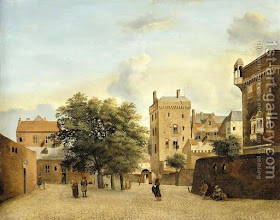.jpg) If there are two towns in the proximity of one another, then on Shabbat the residents of the large town can walk through the small town, but the residents of the small town cannot walk through the whole large town. Why?
If there are two towns in the proximity of one another, then on Shabbat the residents of the large town can walk through the small town, but the residents of the small town cannot walk through the whole large town. Why?
Residents of both towns were measuring their techum (walking distance on Shabbat). The techum of the small town dwellers ended in the middle of the large town, and they were not allowed to go any further. However, the eruv of the large town dwellers overran the complete small town. In that case, the complete small town counts as if it was only 4 steps, and the residents of the large town thus gained a large distance (the complete size of the small town minus four steps) added to their eruv.
Had they placed their eruv food in the other town, they would always count the town as four steps, and in addition have two thousand steps beyong. Rabbi Akiva disagrees with this last rule. He said to the Sages, "Don't you agree that if one places the eruv in a cave, he only has two thousand steps around himself?" They answered, "Yes, but that it because the cave is not inhabited. By contrast, an inhabited city counts as only four steps, and you have two thousand steps around."
Art: View of a Small Town Square by Jan Van Der Heyden (1637-1712)
No comments:
Post a Comment